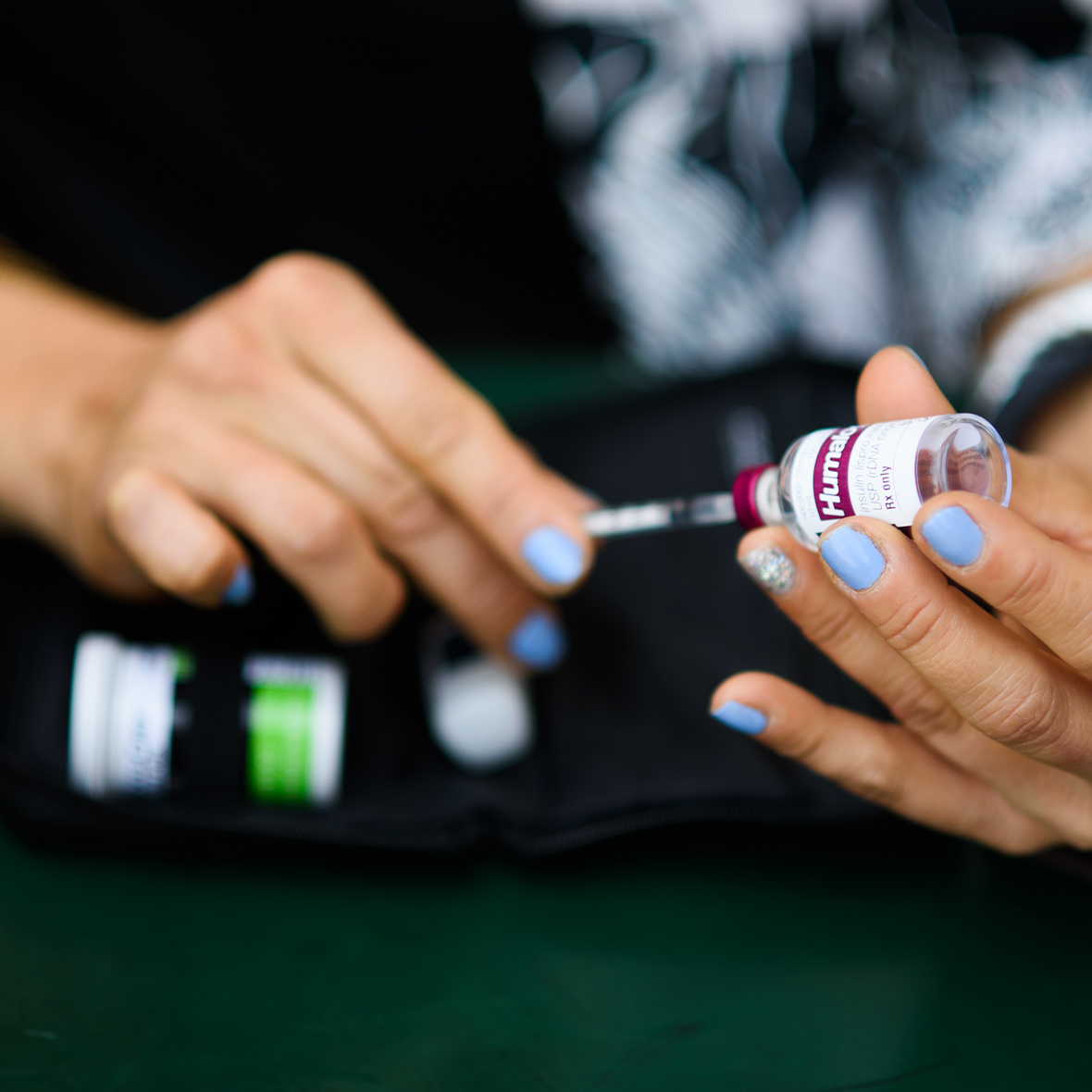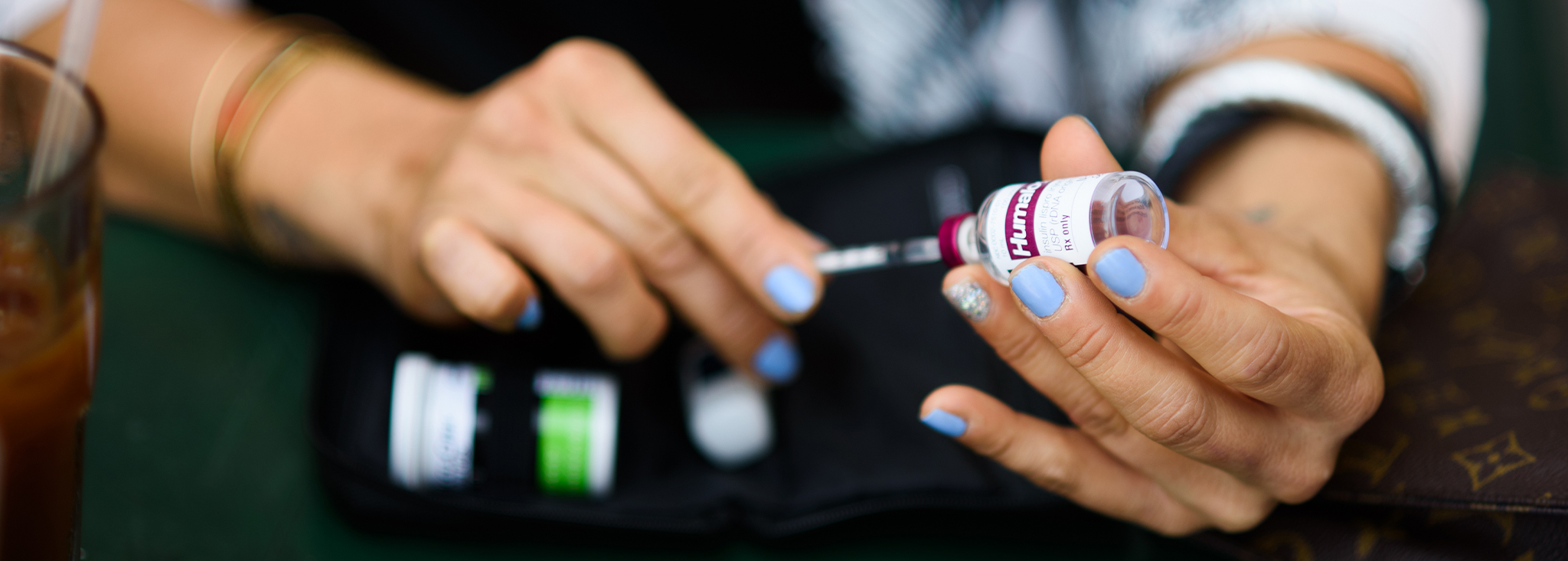How to Talk to Kids About Type 1
In this week’s T1D in the Wild, Alexi discusses the best ways to teach children about type 1 diabetes.
If you’re like me, you are either approaching the age, have recently passed the age, or are currently right smack dab in the middle of the age where seemingly all of your friends that you grew up with are having oodles of babies. Or maybe you even have kiddos of your own who are starting to have play dates with other little ankle-biters.
Children are blessings, of course. The miracles of life. But—what happens when they start talking up a storm and become insanely observant? Like, for example, when you jab yourself with a needle or squeeze a bunch of blood out of your fingertip or whip out your little device that looks deceptively like a fun toy during dinner? THEY NOTICE. Trust me, they notice.

How do you explain type 1 diabetes on somewhat of a basic level that children will understand without intimidating, confusing, or frightening them? Explaining type 1 diabetes to an adult, or to a child who actually lives with the disease are entirely different animals.
The first time I ran into this issue, it happened indirectly. One of my best friends has a 2-year-old. I had invited her to come to dinner with me and a few other friends. My friend told me that, as she was leaving, her daughter asked her if there would be cake at this dinner “party.” My friend told her that there probably wouldn’t be, because cake makes Alexi’s “tummy hurt.” As I have mentioned before in my previous columns, I do choose to eat low-carb, so she was correct in assuming that I would not be ordering a bunch of desserts that night. However, the way that she chose to explain it to her child was not how I would have preferred for her to do so. But I can’t blame her. “It makes her pancreas hurt” wouldn’t have been much better.

This is where it gets tricky—because I would never tell my friends how to parent their children, but at the same time, it is my disease to explain, not theirs. These are children that I am going to watch grow up. They will be in my life for the long run, not just some kid and their mom that I met at the grocery store one time. Luckily, I was given another chance to explain it to her little girl myself. We were all at dinner together one evening and she noticed me taking my insulin. I was impressed, because I had become pretty swift with the insulin pen to the point where hardly anyone even noticed it anymore. But this little one did.

“What’s she doing?” She asked her mom. Before my friend had a chance to answer, I asked if I could explain it to her. She agreed. So, I told her:
“I have something called type 1 diabetes. I need to take some medicine whenever I eat.” She stared at me blankly, so I added, “You don’t have to do that. Neither does Mommy. But I do.”
She seemingly took it all in, and then returned to the satisfaction of coloring on her kid’s menu.
So, that was that. There’s always relief in stating the facts—the simple facts. Children can often remind us that it is not always vital to go into the deep, complex details of any facet of your life. In a couple of years, my explanation to her will likely shift into something more like:
“This is called ‘insulin.’ It’s something that our bodies are supposed to make to help us process the sugar in the food that we eat. But my body can’t make it by itself like yours can.”
As kids grow older, of course, there becomes more of a necessity to explain how the body works and how sometimes different parts of the body decide not to work so perfectly. This is why I wish school systems explained autoimmune diseases (and other diseases) more effectively to kids, so that there would be a heightened awareness with regard to the adversity that so many of us experience, as well as the warning signs to look out for. But that’s another story.
I have always felt that it is important to explain illness and disability to children earlier rather than later so that they won’t take advantage of the parts of themselves that are healthy, and so that they can begin to develop a sense of empathy for those that are not so fortunate.
For now, as people with type 1 diabetes, we can do the best we can to help instill that sense of empathy in the children that we are close to, by sharing our experiences with them—and we can hope that they will, in turn, impart that to their peers.
And—that begins with: “I have something called type 1 diabetes.”














